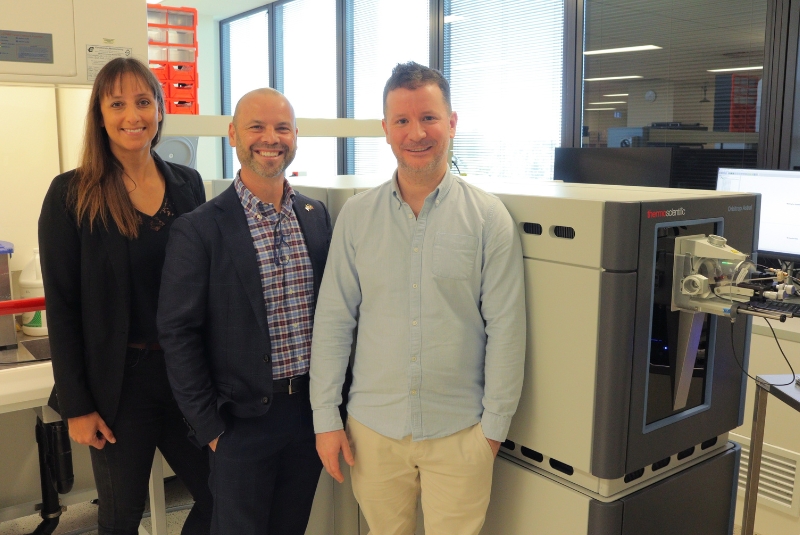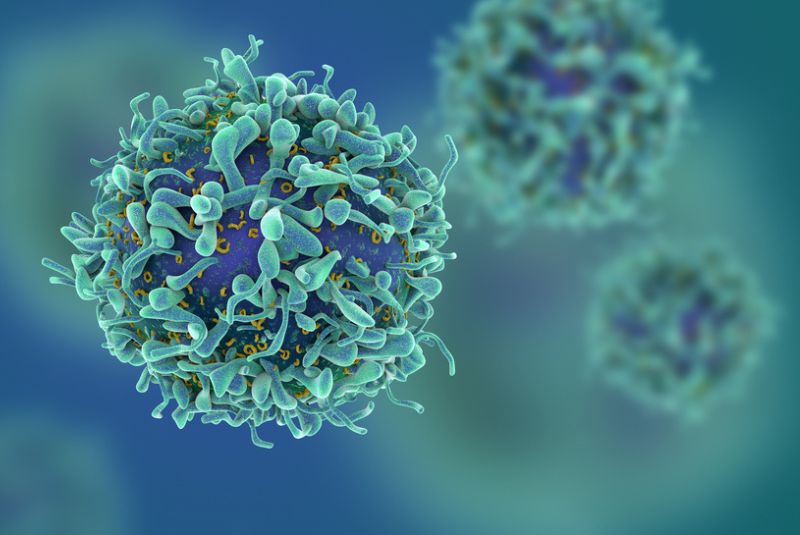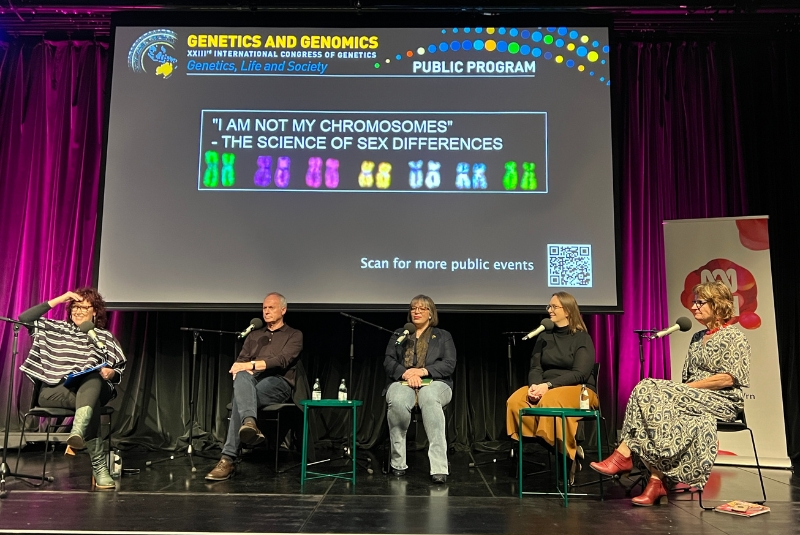Bone Marrow Transplantation in Paediatrics Priority Partnership
- Project status: Active
Research area: Stem Cell Medicine > Heart Disease

We want to know your questions about bone marrow transplants (BMT).
We want to know what questions you have about bone marrow transplants (BMT), with a focus on the time between BMT treatment up until day 180 (six months) following a BMT.
Through this, we aim to identify bone marrow transplant research priorities in Australia, New Zealand, United Kingdom and Europe for children and adolescents requiring BMT.
We want to know what questions you have about bone marrow transplants (BMT), with a focus on the time between BMT treatment up until day 180 (six months) following a BMT.
Through this, we aim to identify bone marrow transplant research priorities in...
We want to know what questions you have about bone marrow transplants (BMT), with a focus on the time between BMT treatment up until day 180 (six months) following a BMT.
Through this, we aim to identify bone marrow transplant research priorities in Australia, New Zealand, United Kingdom and Europe for children and adolescents requiring BMT.
Overview
This study is designed to improve the lives of children who are undergoing a BMT.
Our aim is to identify questions that are important to patients, families, healthcare workers and the community which are not currently addressed by research, also known as unanswered questions. The results of this study will help ensure that future research focuses on the needs of children requiring a BMT.
This survey will be distributed throughout Australia, New Zealand, United Kingdom and Europe.
This study is being funded by the Victorian Paediatric Cancer Consortium (VPCC). The VPCC is a collaboration of academic, research and clinical organisations which advance research for patients with cancer.
How the study is run
This study follows the scientific methods of the James Lind Alliance (JLA).
Research on the effects of treatments often overlooks the shared interests of patients, carers and clinicians. As a result, the questions that they consider important are not addressed equally, and many areas of potentially important research are therefore neglected.
The JLA method aims to address this imbalance.
In this method, a range of representatives including patients who had a BMT as a child, their parents or carers, clinicians and allied health professionals make up a steering group guided by a neutral JLA adviser. Each representative has equal input on the direction of the study.
A JLA study brings patients, caregivers, researchers and clinicians together in priority setting partnerships (PSPs). The aim of a PSP is to help ensure that those who fund health research are aware of what really matters to patients, caregivers and clinicians.
More information
Information for participants
We are inviting you to take part in a survey that will identify questions about bone marrow transplantation (BMT) that are important to patients, families, healthcare workers and the community that have not been answered by research.
Taking part in the survey is up to you. You can say no if you want to.
What’s involved if I take part in this study?
Participating in the study is voluntary. It involves completing a questionnaire, but you do not have to answer any question that you do not want to answer. By completing the questionnaire, you have consented to participate in the study. Your participation will be anonymous.
You can participate in this study if you are:
- A young adult (13-25 years) who has had a BMT as a child (before the age of 18)
- Friends and family of children who have had or are going to have a BMT
- Health and care providers (including doctors, nurses, social workers, and others) who care for patients who have had or are undergoing a BMT
- Member of an organisation for patients receiving BMT
- Someone who is interested in this topic
- Able to complete the survey in English
The survey can be completed online by following the link to the survey.
All your answers are completely confidential and anonymous.
What happens next?
The responses to this survey will be themed, summarised and evidence checked.
The second survey will ask young adults, parents, families and health/care providers to choose up to 10 questions that matter most to them from a list of questions generated in the first survey.
The highest-ranked questions from survey two will go to a final workshop.
Young adults, families and health/care providers will discuss and agree upon the 10 most important questions for future research. You are welcome to participate in all the stages of the project.
Research team
Lead researcher
| Lead researcher | Role and organisation |
|---|---|
| Associate Professor Rachel Conyers | Paediatric Oncologist and BMT Physician, Clinician Scientist Fellow Murdoch Children’s Research Institute University of Melbourne |
Project members
Coordinators and information specialists
| Researcher | Role and organisation |
|---|---|
| Ms Beth Williams | Academic Pharmacist, Senior Research Officer Murdoch Children’s Research Institute |
| Ms Roxanne Dyas | Academic Pharmacist, Senior Research Officer Murdoch Children’s Research Institute |
Steering group members
| Researcher | Role and organisation |
|---|---|
| Suzannah Kinsella | James Lind Alliance Adviser, United Kingdom |
| Associate Professor Theresa Cole |
BMT Physician, Immunologist University of Melbourne |
| Dr Katherine Colman | Advanced Trainee in Paediatric Oncology, The Royal Children’s Hospital |
| Professor Trevor Duke | Paediatrician and Intensive Care Physician, The Royal Children’s Hospital University of Melbourne |
| Dr Ben Gelbart | Paediatric Intensive Care Specialist Murdoch Children’s Research Institute The Royal Children’s Hospital Melbourne University of Melbourne |
| Professor Andrew Gennery | Professor in Paediatric Immunology and Haematopoietic Stem Cell Transplantation, The Great North Children’s Hospital Newcastle University, United Kingdom |
| Associate Professor Amanda Gwee | Paediatrician, Infectious Disease Physician and Pharmacologist Murdoch Children’s Research Institute |
| Professor Arjan Lankester | Professor in Paediatrics and Paediatric Stem Cell Transplantation Leiden University Medical Centre |
| Lisa Ott de Bruin | Paediatrician and Fellow of Paediatric Infectious Diseases and Immunology Leiden University Medical Centre |
| Dr Lorna McLeman | Paediatric Oncologist and Bone Marrow Transplant Physician Murdoch Children’s Research Institute The Royal Children’s Hospital St Vincent’s Research Institute |
| Dr Adam Nelsen | Staff Specialist in Bone Marrow Transplant and Oncology Kids Cancer Centre Sydney Children’s Hospital |
| Dr Timothy Prestidge | Transplant Haematologist Starship Children’s Hospital Auckland City Hospital |
| Dr Kanchan Rao | BMT Physician Great Ormond Street Hospital (GOSH), United Kingdom |
| Dr. Lori Chait-Rubinek | Clinician and Parent of BMT Recipient The Royal Children's Hospital |
| Professor Mary Slatter | Paediatrician in Haematopoietic Stem Cell Transplantation Great North Children’s Hospital in Newcastle Newcastle University, United Kingdom |
| Dr Shivanthan Shanthikumar | Paediatric Respiratory Specialist and Clinician Scientist Murdoch Children's Research Institute The Royal Children’s Hospital Melbourne |
Collaborators
We extend a heartfelt thank you to all participants, key stakeholders, partners and funders for all involvement in this Bone Marrow Transplantation in Paediatrics Priority Partnership.
- Australian and New Zealand Children’s Oncology Group (ANZCHOG) and sub-group TACTIC (national malignant discussion BMT group)
- Zero Childhood Cancer Program Patient Advisory Group (ZERO PAG)
- Australian Society of Clinical Immunology and Allergy (ASCIA) and the sub-group TAPID (national immunology BMT discussion group)
- Australia and New Zealand Transplant & Cellular Therapies (The Blood and Marrow Transplant Advisory Committee)
- Immunodeficiency UK
- Anthony Nolan | Saving lives through stem cells
- British Society of Blood and Marrow Transplantation and Cellular Therapy
- Youth Cancer Advisory Board
- Canteen Australia | Cancer Support For Young People
- Redkite | Kids Cancer Charity & Family Support Australia
- Camp Quality
- Childhood Cancer Association
- Cancer Council Australia
Funding
Funding for this project has been received from the Children’s Cancer Foundation and Victorian Paediatric Cancer Consortium.
Contact us
If you would like more information regards this project, please contact:
Ms Roxanne Dyas/Ms Beth Williams
Email: show email address
Phone: show phone number
Murdoch Children's Research Institute
Royal Children's Hospital
50 Flemington Road
Parkville
Victoria 3052 Australia
If you would like more information about your rights as a participant, please contact The Director of Research Operations at The Royal Children’s Hospital on (03) 9345 5044 or email them at [email protected]













